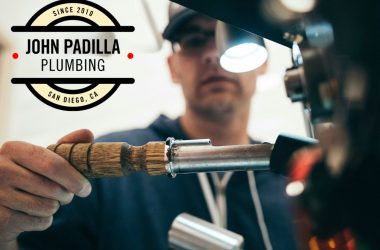Last Updated on: 16th July 2024, 11:12 am
Too often, we underestimate the importance of dust extraction in production and processing across many industries.
High standards of cleanliness, which are essential for workplace health and safety as well as the quality of the final product, are closely linked to effective dust extraction systems.
Let’s break down what these systems entail…
What is an industrial dust extraction system?
An industrial dust extraction system is a specialized setup designed to collect, filter, and remove dust and particulate matter generated during various industrial processes.
These systems play a crucial role in maintaining air quality, protecting worker health, and ensuring the smooth operation of equipment.
Here are the key components and functions of an industrial dust extraction system:
- dust collectors
The core units where dust is collected and filtered.
- Ductwork
A network of pipes and ducts that transport dust-laden air from the source to the dust collector.
- Hoods and enclosures
Capture dust at its source.
- Fans and blowers
Provide the necessary airflow to transport dust-laden air through the system.
- Filters
Essential for trapping and removing fine dust particles from the air. Various types of filters are used, such as drum filters, water scrubber filters, bag filters, and cyclone filters, depending on system specifications and company needs.
- Airlocks and Valves
Control the movement of dust within the system and prevent backflow.
- Collection bins or hoppers
Store collected dust for disposal.
The advantages of having an industrial dust extractor
Industrial dust extractors capture dust and particulate matter from processes such as cutting, grinding, sanding, welding, and material handling.
They remove dust from the air to ensure it is safe for release into the environment or for recirculation within the facility.
By maintaining air quality within permissible exposure limits (PEL), they ensure a safe and healthy working environment, helping industries comply with local, national, and international regulations regarding air quality and worker safety, such as OSHA and EPA standards in the United States.
Industrial dust extractors also protect equipment, making them a valuable investment.
The benefits of industrial dust extractors include:
- health and safety
Protecting workers from respiratory and other health issues.
- Environmental protection
Reducing harmful emissions.
- Operational efficiency
Preventing dust-related equipment malfunctions.
- Cost savings
Lowering maintenance costs and extending equipment life.
Dust extraction systems are used in many industrial sectors, including manufacturing (metalworking, woodworking, plastics, and composites processing), mining, pharmaceuticals, food processing, chemical processing, and the converting sector.
Converting sector & industrial dust extraction systems
In the converting sector, which involves processes such as slitting, laminating, coating, and printing, industrial dust extraction systems are critical for maintaining product quality, ensuring worker safety, and preventing equipment malfunctions.
It’s important to balance cost sustainability with plant performance.
Products like Sorgato’s systems are designed to protect worker health and improve product quality, while also facilitating cleaning and maintenance activities, thus reducing time and costs.
Customized solutions for specific needs
Every converting process has unique requirements, so it is essential to customize dust extraction systems to meet specific needs.
This includes:
- preliminary surveys (conducting detailed assessments to understand dust generation points and volume).
- Predictive analysis (estimating potential dust emissions and identifying concentration areas).
- Tailored designs (designing systems with the right number of dust hoods, appropriately sized fans, and filter systems to meet specific operational needs).
- Energy efficiency (implementing measures such as variable speed drives for fans to optimize energy consumption without compromising performance).
- Ease of maintenance (designing systems that facilitate easy access for cleaning and maintenance to minimize downtime and operational costs).
To contain electricity consumption, appropriately sized fans can be installed to reduce the energy needed to operate the dust collection system.
Additionally, by implementing technical measures, high performance can be maintained even with lower airflow.
As we said, a preliminary survey is essential to determine how and where to intervene in a targeted manner, customizing the system structure. If the converting line is not yet operational, it is crucial to predict where dust emissions will be concentrated and estimate the amount of dust generated.
Considering the expected dust production from the line, the proposed design will feature a sufficient number of dust hoods and a filter system with a fan and motor appropriately sized to meet the requirements. These decisions will enhance the cost-effectiveness of the system, which, as we’ve observed, is crucial for companies in this industry.
By investing in well-designed industrial dust extraction systems, companies in the converting sector can ensure a cleaner, safer, and more efficient production environment, ultimately leading to better product quality and compliance with stringent health and safety regulations.







